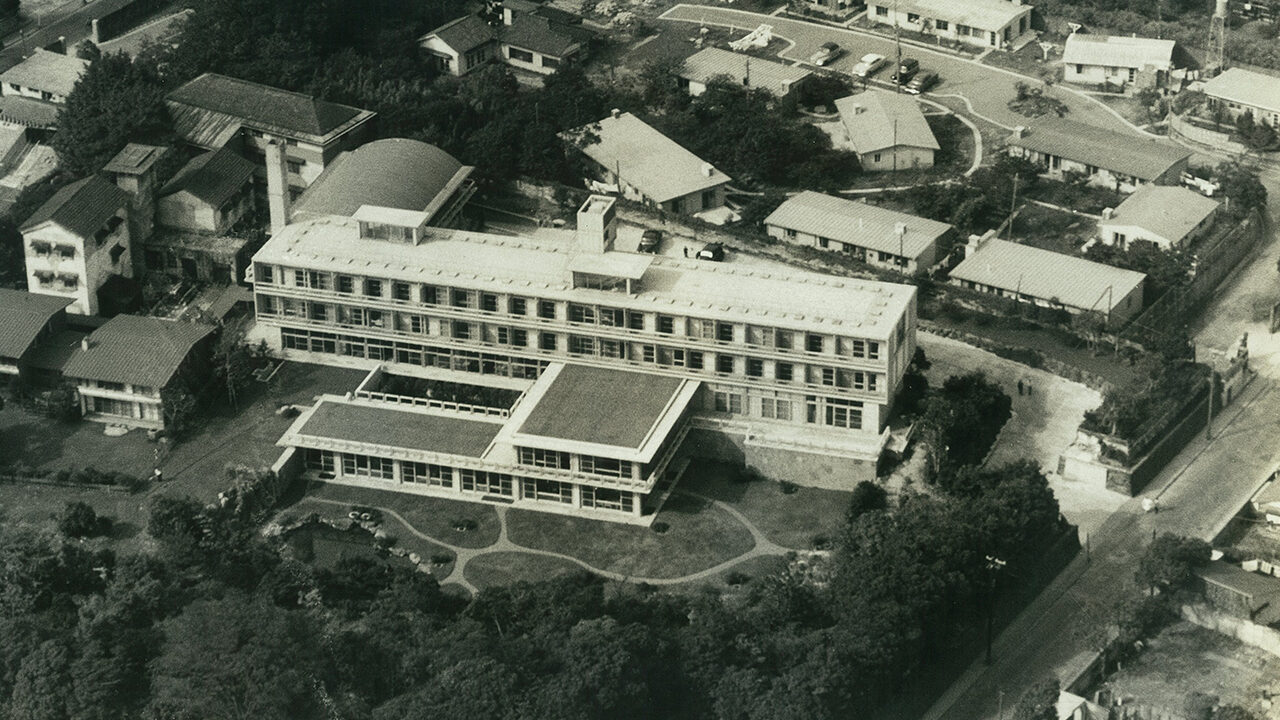Building & Garden
In 1955 the I-House building was constructed under the collaboration of three prominent Japanese architects – Maekawa Kunio, Sakakura Junzō, and Yoshimura Junzō and was awarded the Architectural Institute of Japan Prize the following year. In August 2006, it was registered as a tangible cultural property by the Agency for Cultural Affairs of Japan.
I-House Building

The site of the International House of Japan formerly held a mansion belonging to the Kyōgoku Clan, feudal lords of Tadotsu Fief in present Kagawa Prefecture, during the Edo period up to the very last days of the Tokugawa Shogunate in the late 19th century.
Early in the Meiji period ownership shifted to Inoue Kaoru, then foreign minister, and elaborate banquets were held to show his tea house, Hassō-an, in April 1887, with the Emperor and Empress Meiji, the Empress Dowager and ambassadors of various countries in attendance.
At that time, a kabuki play was performed by leading actors in front of the Imperial family at this site for the first time ever, which is rumored to have spurred its popularity thereafter.
After Inoue Kaoru, this property was possessed by Prince Kuninomiya, the Akaboshi, and the Iwasaki families. Finally, it was passed on to government ownership after World War II and was disposed of to the I-House.
In 1955 the I-House building was constructed under the collaboration of three prominent Japanese architects—Maekawa Kunio, Sakakura Junzō, and Yoshimura Junzō—and in 1976 the building was expanded using Maekawa’s design. The I-House building has been awarded the Architectural Institute of Japan Prize and in August 2006 was registered as a tangible cultural property by the Agency for Cultural Affairs of Japan.
Stunning aerial drone footage of I-House
THREE ARCHITECTS
The first Documentary Short Film Commemorating I-House’s 70th Anniversary
